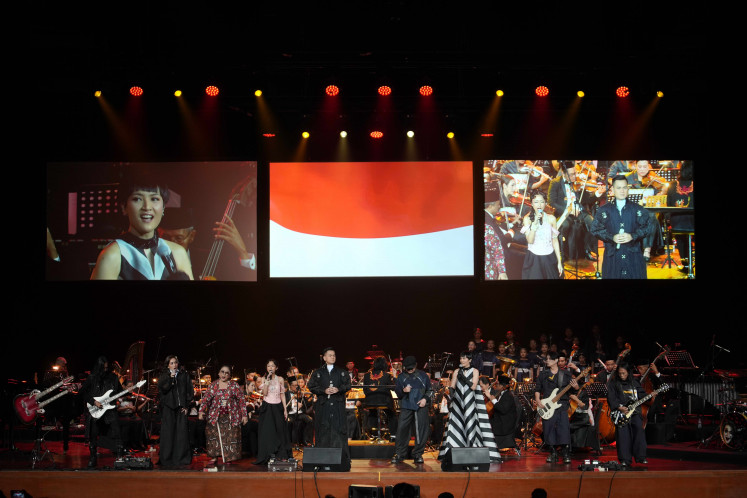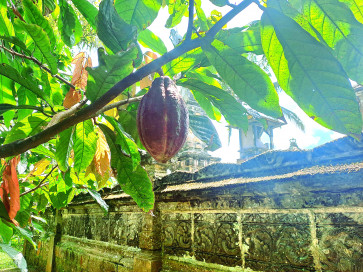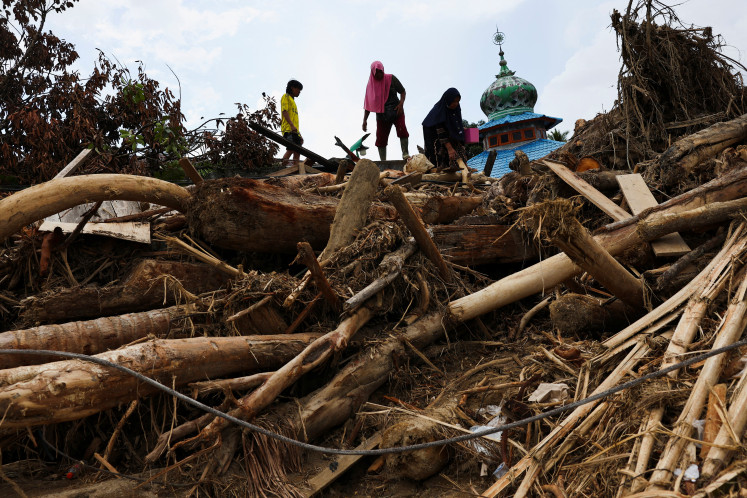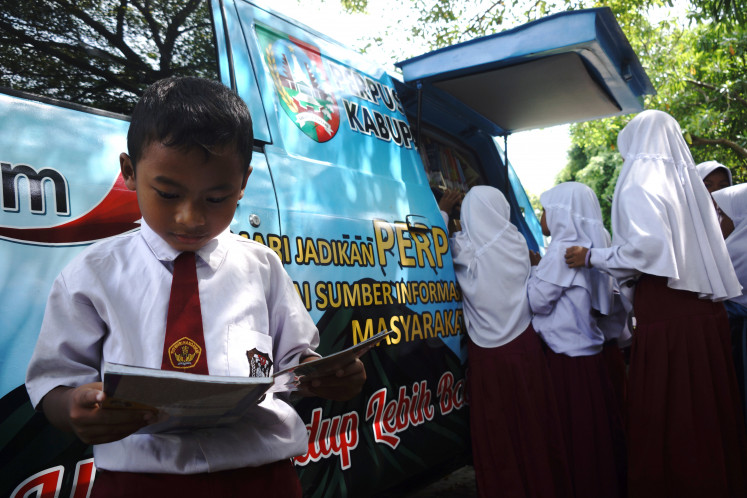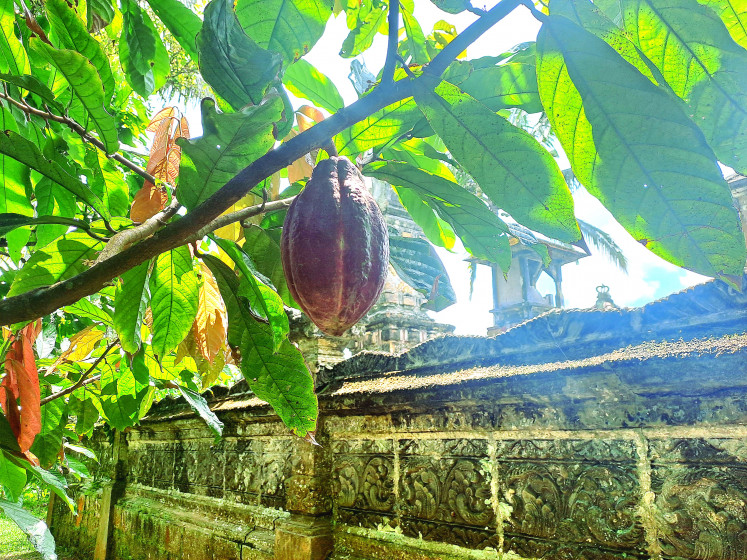Popular Reads
Top Results
Can't find what you're looking for?
View all search resultsPopular Reads
Top Results
Can't find what you're looking for?
View all search resultsA centuries-long task to save PLAOSAN TEMPLE
Unspoiled: The Plaosan Temple complex in olden times
Change text size
Gift Premium Articles
to Anyone
Unspoiled: The Plaosan Temple complex in olden times.
At Plaosan Temple, four dwarapala statues can be seen standing, like guards on sentry duty.
According to the teachings of Shiva and the Buddha, a dwarapala is a temple gate protector or guardian. They can take the shape of a human ' or a monster.
Five meters behind the statues, 326 ancillary temples called perwara surround two magnificent main temples to form the Plaosan Temple complex in Klaten, Yogyakarta.
Plaosan lies only 1,500 meters northwest of the world-renowned Prambanan Temple. Proximity, however, is no guarantee of fame.
While Prambanan's cultural significance has been recognized by UNESCO, Plaosan Temple is a forgotten testament to the glory of the Matraman kingdom.
Take it slow: At the current rate, renovation of the 326 temples of the complex will be finished in about three centuries.
It's deserted. Tourists are rarely seen.
The soaring structures of the temples of Plaosan are topped with stupas that were built in the ninth century by King Rakai Pikatan from the Sanjaya dynasty, according to experts.
The height of the buildings is typical of Hindu construction, while the stupas evoke a Buddhist design ethos.
Uniquely, Plaosan contains an inscription bearing the names those who built the temple complex.
Although no longer intact, the inscription was once translated by a Dutch historian, J. G. de Casparis, who said that Plaosan was built by Rakai Pikatan for his consort, Pramodhawardani, a Buddhist from the Sailendra kingdom.
Guardians: At Plaosan Temple, a dwarapala stands guard.
Plaosan Temple, then, can be seen as a symbol of love.
'At a glance it looks like a Hindu temple, but closer examination reveals its striking Buddhist features,' Deny Wahju Hidajat, the chief of the management unit for the temple complex, said.
The 326 perwara comprise 252 small temples surrounding Plaosan Lor, the northern main temple; and 74 surrounding Plaosan Kidul, the southern temple.
According to Deny, most of the ancillary temples are in poor condition.
Only 23 pewara have been restored to date. He only has a budget to repair one per year, which means that complete restoration of the complex will take about three centuries to complete.
This year, perwara number seven in row one is undergoing restoration. The choice was based on the material remaining from other damaged temples.
Decapitated: Some of the statues whose heads have been removed, presumably by art thieves, have been secured to prevent further desecration
Frequently, the temples are missing pieces. Some have been stolen; others have fallen off due to age and now are hidden, buried in the dirt.
Plaosan Lor and Plaosan Kidul stand 70 meters apart, separated by roads. An overhead view, however, reveals that the temples are part of a single complex surrounded by ditches.
'At present the ditches only partly appear as samples,' Deny said. The ditches currently reside in plots privately held by local residents.
Four excavations of the ditches have been undertaken by the Central Java Cultural Heritage Conservation Center (BPCB), which has rented land for the digs from its owners.
While the excavation is a long-term undertaking needed to create a 'sterile' area around the complex, Deny said that it would be best to proceed slowly, without a fixed timetable. 'Even farm clearance is very difficult to carry out, let alone excavation in a settlement-packed village.'
The ditches that surround the temple complex are apparently unique. In other sites in Central Java, the ditches are smaller, surrounding only the temples themselves.
At Plaosan, the ditch system, designed to be part of the temple's gate, has been estimated to run for about 460 meters with a width of 290 meters.
At work: A worker inspects a piece recovered from one of the temples of the Plaosan complex.
Plaosan's location amid farmland and settlements has been more unfavorable than beneficial in preserving its cultural heritage. Isolation has made it easier for thieves to plunder the temples.
The iron fences surrounding the complex, for example, border the public road without the recommended 200-meter buffer. While Plaosan Kidul is situated next to settlements, providing more security, Plaosan Lor lies is closer to paddy fields that are eerily quiet at night.
The last theft at Plaosan occurred in November 2009. Two statue heads were stolen: a Buddha Dhyani, in the form of a Buddha with curly hair; and a Bodhisattva, or crowned Buddha.
Police eventually found 32 archeological objects in the home of the man arrested for the theft. Most of the objects were the heads of statues.
Aris Banindro, from Plaosan Temple's Restoration Technical Department, is fighting to make sure that thieves can no longer plunder the temple complex.
He described some of the steps that had been taken to protect the headless statues that were left behind.
'We've moved the statues of Plaosan from the places where they were unearthed to the house of statues for security reasons,' Aris said.
' Photos by JP/Kusumasari Ayuningtyas



